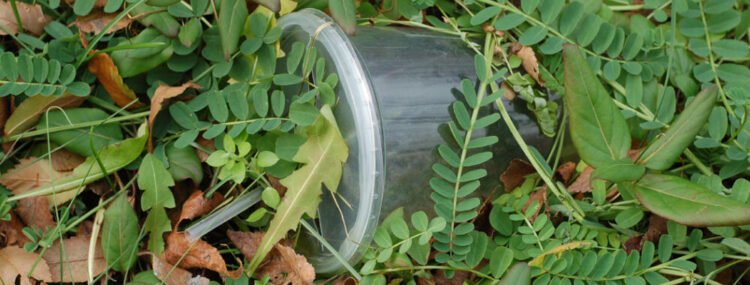
‘Biodegradable’ plastic, cure or curse?
I must admit to having been guilty in the past of complacency around my packaging. If the packaging was labelled ‘recyclable’ or ‘biodegradable’ that used to be enough to satisfy any concerns I had about its environmental impact. I was shocked and appalled to learn that when a product is labelled ‘biodegradable’ it does not necessarily mean it will break down. I wanted to explore the problem of ‘biodegradable’ plastic in this article.
Firstly, what is biodegradable plastic? PlasticsEurope define biodegradable plastic as ‘plastics degraded by microorganisms into water, carbon dioxide (or methane) and biomass’. They go on to state that “biodegradable plastics biodegrade in controlled environments under defined conditions” and specifically, they do not degrade in landfills, nor the sea. The microorganisms required to degrade these materials require certain levels of temperature, water and oxygen for complete biodegradation to occur. So, unless that biodegradable plastic is sent to exactly the right place, it isn’t going to biodegrade!
In addition to the problem that these plastics aren’t necessarily going to biodegrade, there is also a risk they will increase the plastic pollution we see. I am a living example of the power of labelling. When I believed the packaging was biodegradable, I was not concerned about purchasing and discarding it, therefore, I did not alter my shopping habits. Furthermore, although I always put my rubbish in the bin, there are those who would happily discard products into the environment in the misguided belief that it will break down naturally, thereby contributing directly to the amount of plastic entering our natural environment, where they don’t break down.
Below is a list of just some items which I have come across marketed as ‘biodegradable’ and some possible alternatives.
Bamboo toothbrushes – the bristles of most brands are a form of nylon (a type of plastic) which has been shown to biodegrade in specific conditions. The only truly biodegradable toothbrush I have come across is this one with swine hair.
Plastic carrier bags – this is a tricky one but I tend to assume plastic bags are not biodegradable. There are always new ones coming on the market though so that might not be the case now. To be safe, try a jute bag or a paper one.
Plastic bottles and cups – I suppose making these biodegradable could lead to lots of people with soggy hands and nothing to drink. The best option here is to keep a reusable cup or bottle handy.
Now to something more positive…scientists at Bath University have made a plastic which is biodegradable at room temperature and low pressures using only enzymes found in soil bacteria. This plastic doesn’t contain toxic chemicals and the process of making it uses carbon dioxide instead of harmful chemicals. This plastic is relatively new so probably isn’t on our shelves yet, but keep an eye out for it 🙂
Ultimately, the solution should always be to reduce consumption wherever possible, that way avoiding the confusion of whether a material is truly recyclable/biodegradable or not. The mantra ‘Refuse, Reduce, Reuse, Recycle’ is key, with the most important of those being to ‘refuse’ anything you don’t need in the first place. Follow this, aiming for ‘refuse’, and you’ll be well on your way to a zero waste lifestyle! 🙂

2 Comments
Love your thought-provoking articles…. I have bookmarked your blogs pages.
Hi K, thank you so much for this, really made my day 🙂
Leave a Comment